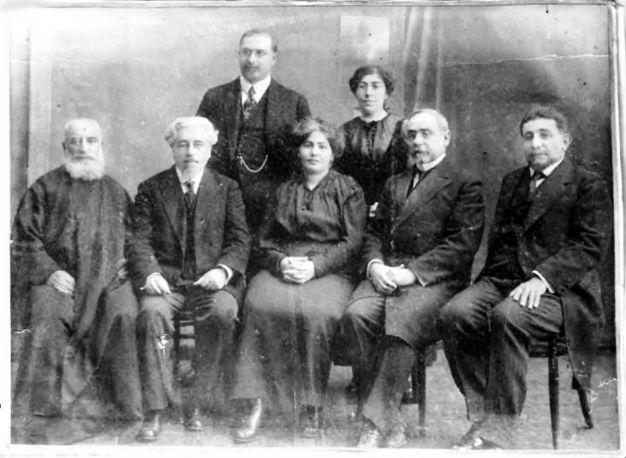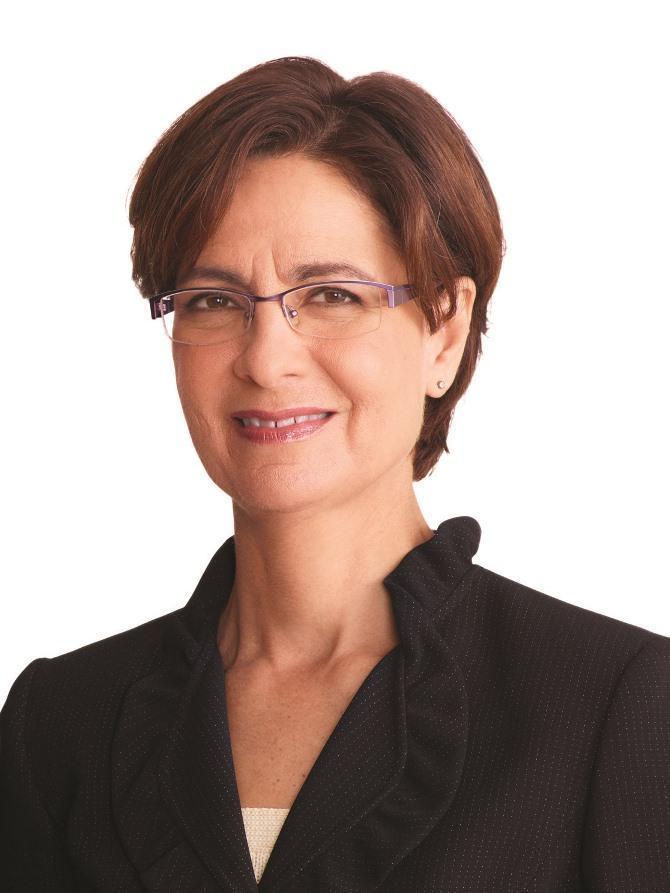INTERVIEW: ‘In the Ruins’ still resonates over a century on
William Armstrong - william.armstrong@hdn.com.tr

Over a century on, the scenes described by Zabel Yessayan in the aftermath of the 1909 massacres of Ottoman Armenians in Adana still resonate grimly. In the political tumult in the final years of the Ottoman Empire, tens of thousands of local Armenians were killed in the first months of 1909, and Yessayan traveled down to Adana with a delegation from Istanbul to inspect the aftermath.
HDN spoke to Judith Saryan, one of the editors of a newly published edition of Yessayan’s account of the trip, “In the Ruins: The 1909 Massacres of Armenians in Adana” (reviewed in HDN
here). Saryan described Yessayan’s life and times, her trip to Adana, and the modern-day resonance of her account.
 The book describes Yessayan’s trip to Adana and its surroundings in the aftermath of the massacres of 1909. She was sent with a delegation from the Armenian Patriarchate in Constantinople. Who was Zabel Yessayan and what was the purpose of the trip?
The book describes Yessayan’s trip to Adana and its surroundings in the aftermath of the massacres of 1909. She was sent with a delegation from the Armenian Patriarchate in Constantinople. Who was Zabel Yessayan and what was the purpose of the trip?She was born in 1878. Her maiden name was Hovanessian and she was born in Constantinople in the Scutari [today’s Üsükdar] neighborhood. She learned to read at a very young age, her father was a very important influence on her life. He taught her to read and he spent many hours with her discussing different issues, in particular the importance of freedom of expression and women’s rights. He was a strong role model and encouraged her to do what she wanted. When she decided to be a writer he was very supportive. She attended school for four years and graduated when she was 14. She had an opportunity to go to Europe to study when she was 17. She went to Paris to study, also working there on an Armenian-French dictionary and as a tutor. She wrote about this in a short story called “The Man,” which described her student years in Paris.
After she got married in Paris she came back to Istanbul in 1902, publishing and writing constantly. She was already well known within the Armenian community and was active in its political life. She wrote frequently about women's issues in “Dzaghig,” an Armenian periodical, and made quite a name for herself.
With the restoration of the Ottoman constitution in 1908, when the Young Turks pushed the sultan aside, Yessayan was optimistic - like many Armenians - that it would usher in a new age of more rights for minorities. It was an optimistic time and Yessayan actually tried to start a peace organization. She learned about other peace organizations when she was in Paris and had been involved in one started by a Polish woman. She wanted to set up a similar organization in Istanbul and was working with women and men and members of all ethnic and religious groups. She reached out to Turks she had met in Paris.
So she had made some interesting strides after the restoration of the constitution but her plans were never to come to fruition because of the shocking news of the Adana massacres in April 1909. The Armenian Patriarchate in Constantinople [the Armenian religious leadership] sent a delegation of people to Adana to provide medical and emergency relief and then sent a second delegation. It asked Yessayan to go with the second delegation. She didn’t have a medical background but she was given the authority to help provide relief for the orphans, to work on their behalf. Perhaps the Patriarchate also expected her to write about her experiences but that wasn't a specific directive.
Yessayan’s delegation sailed down from Istanbul. She describes how there were others on the boat too, including a second court martial of Turkish military officers sent by the government to investigate what had happened. There had been a first court martial organized by the local political authorities in Adana, where the Young Turks were in power. The first court martial pointed the finger at several people who had started the massacres. But this was a second shock to the Armenian community because several innocent Armenians were found guilty and hung, as well as innocent Turks. Surprisingly, or not so surprisingly, none of the local leaders were found culpable.
There had been violence at various points in the late 19th and early 20th centuries targeting Armenians. The massacres of 1909 came at a time when the political situation in Constantinople was very dynamic. The Young Turk revolution of 1908 had restored constitutional rule to the Ottoman Empire but there was a countercoup by Sultan Abdülhamit II that wrestled power back, and then another fightback by the Young Turks. What was the relationship between these power shifts and the massacres of Armenians in Adana?Yessayan didn’t really go into great depth analyzing this. But she does talk about it in the preface. She basically says there was a counter-revolution against the Young Turks and then the liberation army fought back and won control over the counter-revolution. This made the Armenians jubilant, but then there were the massacres in Adana.
We can probably understand there was a lot of unrest in many provinces because there was a changing of the guard. Traditional leaders may have been in power for decades because Sultan Abdülhamit II had been in power for decades, but then there was the Young Turk revolution. So to some extent there was a leadership vacuum.
On the other hand people were continuing their lives. Adana was a fairly important commercial center so the markets there were open. The area around the city was an important agricultural area so people were still farming. People were moving on with their lives.
The book is often so vivid that it’s almost difficult to read at points. The descriptions of suffering and injuries are very visceral and shocking. Was that a deliberate decision on Yessayan’s part?Yes. Yessayan was very deliberate in what she wrote. She always took her writing extremely seriously. There is a quote from her, not from this book, where she says: “Literature is not an ornament, a pleasant pastime, a pretty flower. Literature is a weapon to struggle against injustice.” I believe she saw “In the Ruins” as part of this struggle against injustice. She was addressing it to the entire Ottoman fatherland. She wanted to show everyone - particularly the Young Turks and the new government - that the Armenians had effectively been sacrificed in these massacres for the sake of progress. They had fought alongside the Young Turks for rights, in an alliance to achieve changes and progress. But then they had been turned on and suffered the consequences of their support for freedom and for removing the sultan.
I think Yessayan wants to show that in order to find common ground for all progressive people in the empire who could see and understand what had happened. She wanted to find common ground so that this would not happen again. She's very clear in the preface of the book about addressing the whole country. But at the same time she wrote it in the Armenian language, so she expected the primary readers to be Armenians. She wanted to show them what happened so she didn’t want to gloss over it or flinch from the horror of it.
The account of “In the Ruins” was published very soon back in Constantinople after she returned. What was the publication history? Who published it and what were they aiming to achieve?She published the book very soon after her return. At the end of the original manuscript it gives the date 1910 and the first edition was published in 1911 by the Armenian Publishing Society.
After the Hamidian massacres of 1894 to 1896, the Armenian intellectual community in Istanbul was in danger. In fact many of them left the city and the country. This is actually why Yessayan went to France, because her family was concerned about her safety. People were not allowed to write about the massacres in the 1890s. But in 1909, because of the restoration of the constitution, they were allowed to write. So Yessayan's account is not the only account of the massacres in Adana. There is actually another account by a woman, Arshagouhie Teotig, which was also published very soon after the massacres. There were also other accounts by Armenian men and missionaries.
Being able to write about it was actually something new and different from before. And it came at a time of great discussion and political consternation for the Armenian community. From the time of the massacres of 1909 to the time of the genocide in 1915 the Armenian community wasn't sure what to do. One really good example of this is Yessayan's work after she escaped Constantinople. She went first to Bulgaria, then to Tbilisi and Baku, and then eventually to Paris. She wrote an autobiographical novel called "My Soul in Exile," which we also published in English translation two years ago. That story takes place in that period from 1909 to 1915 and it reflects the state of unease of the Armenian community. Yessayan raises these important questions: What is the role of art in an environment that is so politically charged, where you don't know from one day to the next what is going to happen? People were worried, scared and the question of "what is art" in this context is something she delves into in "My Soul in Exile." What is the role of art when there is so much death and destruction?
So it was important for her to write. It was crucial. She said it was a struggle against injustice and I think that was her goal in "In the Ruins." She had taken on a leadership role and had been given the authority by the Patriarchate, and she felt it was her duty to write the book.
*Follow the Turkey Book Talk podcast via iTunes here, Stitcher here, Podbean here, or Facebook here.
 Over a century on, the scenes described by Zabel Yessayan in the aftermath of the 1909 massacres of Ottoman Armenians in Adana still resonate grimly. In the political tumult in the final years of the Ottoman Empire, tens of thousands of local Armenians were killed in the first months of 1909, and Yessayan traveled down to Adana with a delegation from Istanbul to inspect the aftermath.
Over a century on, the scenes described by Zabel Yessayan in the aftermath of the 1909 massacres of Ottoman Armenians in Adana still resonate grimly. In the political tumult in the final years of the Ottoman Empire, tens of thousands of local Armenians were killed in the first months of 1909, and Yessayan traveled down to Adana with a delegation from Istanbul to inspect the aftermath. The book describes Yessayan’s trip to Adana and its surroundings in the aftermath of the massacres of 1909. She was sent with a delegation from the Armenian Patriarchate in Constantinople. Who was Zabel Yessayan and what was the purpose of the trip?
The book describes Yessayan’s trip to Adana and its surroundings in the aftermath of the massacres of 1909. She was sent with a delegation from the Armenian Patriarchate in Constantinople. Who was Zabel Yessayan and what was the purpose of the trip?